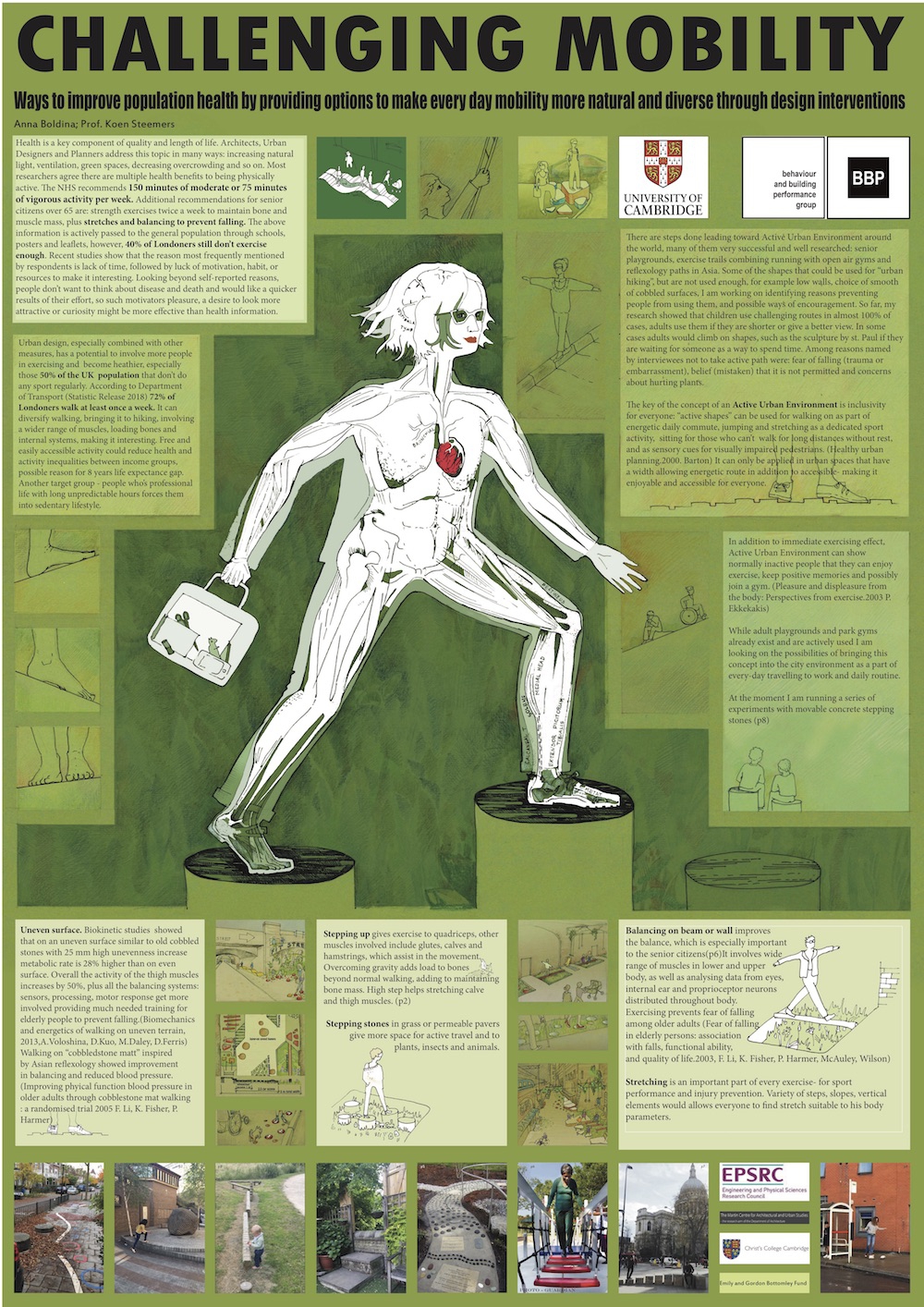Cities / Healthy Cities
Challenged mobility
By Anna Boldina and Koen Steemers | 10 Oct 2019 | 0
The objective of this research is to explore what changes in the built environment can make people more active.
Abstract
Health is one of the key components of the quality of life. Architects, urban designers and planners are addressing this topic in many ways: increasing natural light; ventilation; green areas; decreasing overcrowding, etc. Most researchers agree on the multiple health benefits of being physically active and this information is actively passed to the general population through schools, posters, magazines, etc. For various reasons, however, many still don’t exercise enough, owing to lack of time, motivation, habit, and many other reasons.
The objective of this research is to explore what changes in the built environment can make people more active. Designing for pedestrian mobility, specialists tend to focus on easy and energy-efficient access: making outdoor space manageable for old/less able people and people with baby prams, and thus offering smooth surfaces that minimise the need for energy expenditure. Bike users also benefit from them. We should not forget, however, that we should also offer routes for relatively healthy people and encourage increased personal energy use; for example, where there is enough space, one route can be smooth and safe, while other options more enticing and energetic.
After centuries of developing ways to make life effortless, now might be a moment to reconsider if it’s the right direction of development. This research will help redefine values behind Building Regulations, such as Part M and Part K, and recommendations, such as BREEAM and WELL, and give decision-makers courage to try something new. One challenge is to provide alternative energetic routes, another is to persuade adults to use them.
The research uses multiple methodologies to capture the reasoning and ways different sections of the population make decisions: young and old; healthy and unhealthy; determined and less motivated. It also considers factors relating to people’s various backgrounds and educational levels: for example, extrinsic and intrinsic motivation; constraints from one’s own body and from society; perceived efficiency, and others.
The research will benefit immensely from discussion of various aspects of energy-consuming routes with healthcare specialists and planners.
Organisations involved

